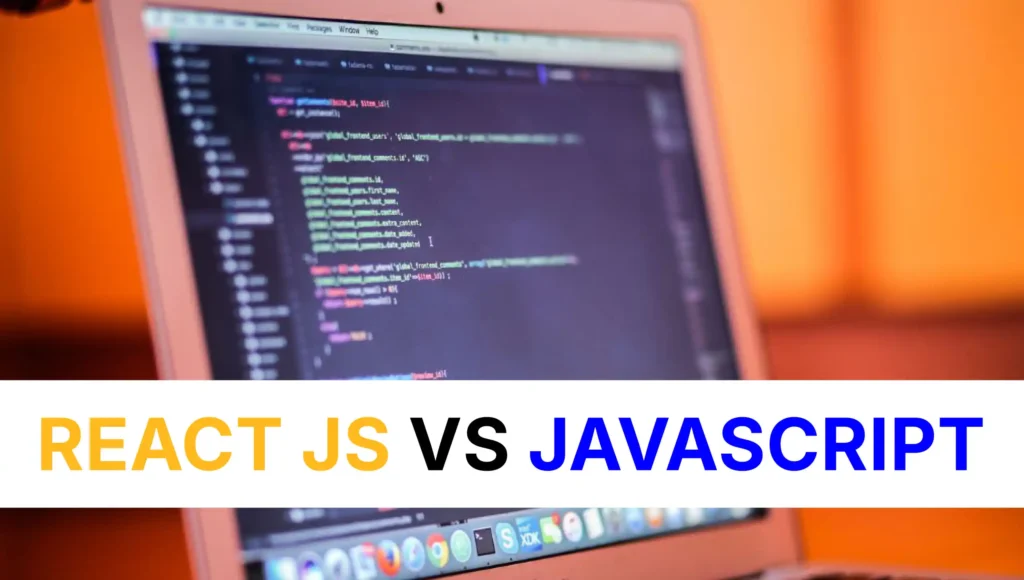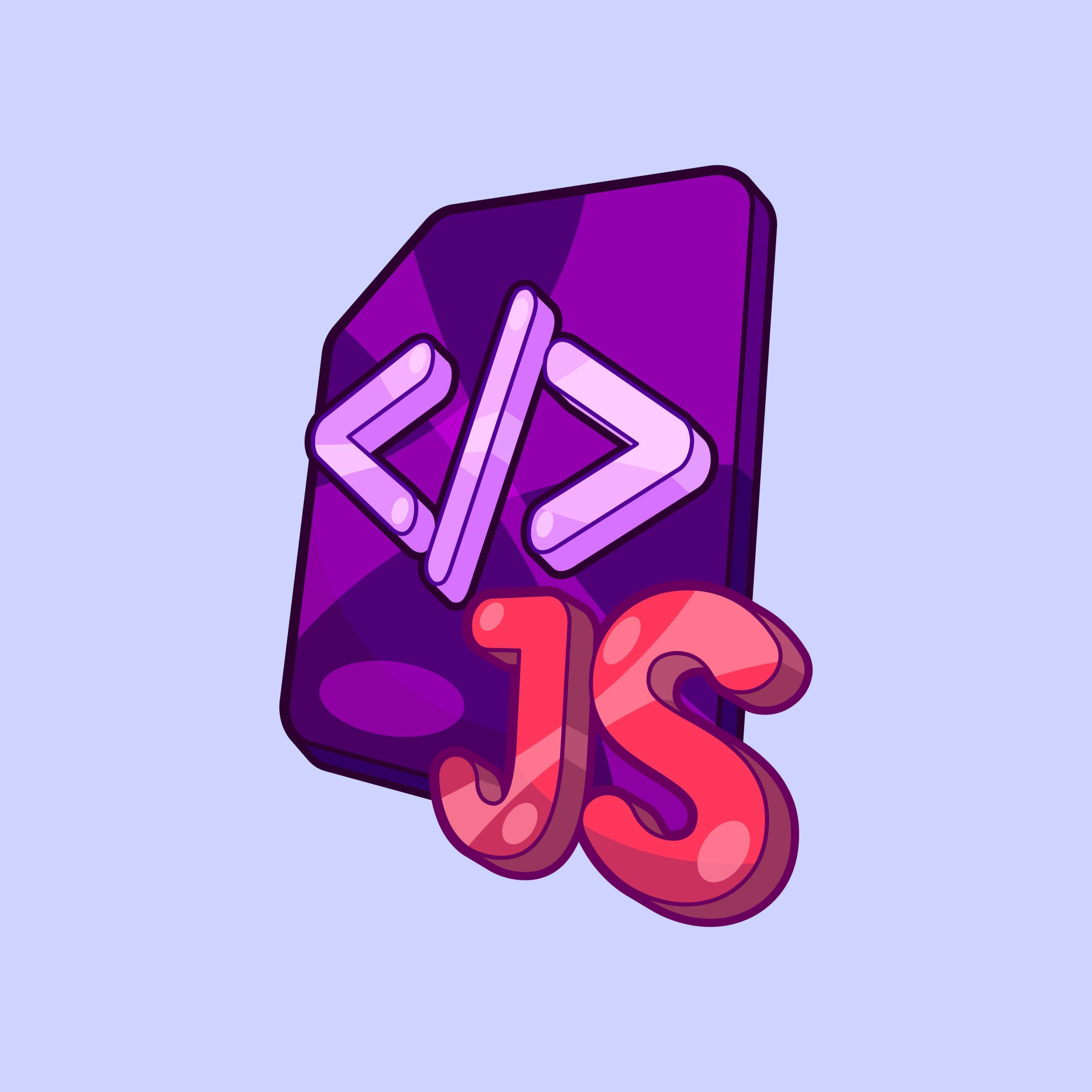Differentiating Between React JS and JavaScript
React JS vs JavaScript is a common confusion when building web applications. Although these terms are similar, understanding the differences behind these similarities can be the key to better decision-making for development projects. In this blog post, we will find out what they are, clearly understand what they do, identify the difference between them, and learn through their actual applications to have a better understanding of how they function together.
What is JavaScript?
JavaScript is a high-level, dynamic programming language mostly utilized to develop interactive websites. It fuels the dynamic parts: animations, form validations, and API calls. JavaScript was invented in 1995 and has grown, becoming one of the key components of modern web development.
When you click a button on a website and get an instantaneous update, that’s JavaScript. It can be run on the client and server sides, which allows versatility. For things like Node.js, Angular, and Vue.js to extend their functionalities further.
The core syntax of JavaScript is simple while enabling developers to write intricate logical statements for web applications. It becomes essential for the developer because of features like event handling, asynchronous programming, and DOM manipulation.
What is React JS?
React JS, or React, is a JavaScript library that was created in 2013 by Facebook. Its main purpose is to simplify the process of creating a user interface by dividing it into reusable components. React is designed for efficiency and flexibility, enabling developers to create complex applications more easily.
React’s declarative style allows developers to articulate what the interface should look like, and React handles updates for efficiency. Most social media spend over-reactive rendering for feeds and comments, for example, Instagram.
React’s Virtual DOM is one of the main concepts behind React’s speed. It smartly knows which changes to apply and will not re-render all components, only the components that have been affected by the current state change. In turn, this leads to improvements in performance compared to classical DOM manipulations.
Difference Between JavaScript and React
JavaScript is the language that React is built in, but they are used for entirely different purposes. JavaScript is a unique programming language. React is a JavaScript-based library.JavaScript does general-purpose programming on the web. This is a library that helps in creating dynamic web applications. JavaScript is versatile and accommodates a variety of use cases.
React is more focused on UI. In a nutshell, React is a JavaScript companion that introduces organization and performance to web and mobile apps.
JSX vs JavaScript: A Connection Between The Two
JSX (JavaScript XML) is most commonly used for React projects. This makes components more natural to read and use because it lets developers write a kind of HTML inside of their JavaScript.
You can write with JSX (that is a full transformation of) instead of writing complex createElement functions.
const element = <h1>Hello, World!</h1>;
JSX compiles into JavaScript behind the scenes. The combination of HTML and JavaScript forms a structure to boost productivity and keep the code clean and manageable.
Advantages of React JS
The increasing popularity of React is because of the practical benefits it provides, including maintaining code retrievable into small pieces, which is better maintainable. Performance improvements with faster updates and rendering. React also has a large community that has built and shared libraries, tools, and resources that make development easier.
These features help developers build scalable, performance-oriented applications.
Is React JavaScript?
Yes, React was written in JavaScript. But while JavaScript is the underlying language, React adds more tooling and patterns around UI development. React’s ecosystem, from JSX to state management to hooks, augments the capabilities of JavaScript, facilitating the construction of complex and efficient interfaces.
For example, React allows us to work with conditional rendering, component updates, and states easily. Doing this without React could require a lot of JavaScript code, which means higher complexity.
React vs. JavaScript
Let’s say you are building a to-do list app:
With JavaScript:
- Developers then manually manipulate the DOM to add, remove, or edit tasks.
- Keeping a state between so many individual elements can get messy.
With React:
- Individual items are handled by a component, whereas the list is managed by some parent component.
- Efficient re-rendering of updates without errors enhances performance through state.
- React makes this process much easier, particularly for bigger projects.
key differences between React and JavaScript
| Feature | React | JavaScript |
|---|---|---|
| Definition | A JavaScript library for building UI | Programming language for web development |
| Type | Library (used with JavaScript) | Language (core for web development) |
| Usage | Builds interactive user interfaces (UI) | General-purpose for scripting and logic |
| Component-Based | Yes (with reusable components) | No (traditional DOM manipulation) |
| Virtual DOM | Yes (improves performance) | No (direct DOM manipulation) |
| Learning Curve | Steeper (requires JSX, state, props) | Easier for beginners |
| Syntax | Uses JSX (JavaScript + HTML/XML) | Plain JavaScript |
| Performance | Fast (due to Virtual DOM) | Slower (manipulates DOM directly) |
| Scalability | Highly scalable (modular structure) | Less structured for large applications |
| Tooling | Requires tools (Babel, Webpack) | Can run in browser without extra tools |
| Framework/Library | Library (focus on view layer) | Language (no built-in view handling) |
| State Management | In-built (useState, useReducer) | Needs custom logic |
| Routing | External (React Router) | Requires manual implementation |
| Community Support | Large, active community | Massive community (core web tech) |
| Examples of Use | SPA (Single Page Applications) | Web development, automation, etc. |
FAQ
Is using React better than JavaScript?
It depends on the project. React simplifies building complex user interfaces, but plain JavaScript offers more flexibility for simple tasks.
Should I learn JavaScript or React first?
Learn JavaScript first. React is a library built on JavaScript, so understanding the fundamentals of JavaScript will make learning React easier.
Is React part of JavaScript?
Yes, React is a JavaScript library, but it extends JavaScript to help build user interfaces more efficiently.
What can React do that JavaScript can’t?
React can manage states, create reusable components, and efficiently update the DOM using a virtual DOM. Plain JavaScript requires more code to achieve similar functionality.
What is the disadvantage of ReactJS?
React has a steep learning curve, especially for beginners unfamiliar with JavaScript or modern web development. Additionally, frequent updates and the need to manage state can add complexity to projects.




